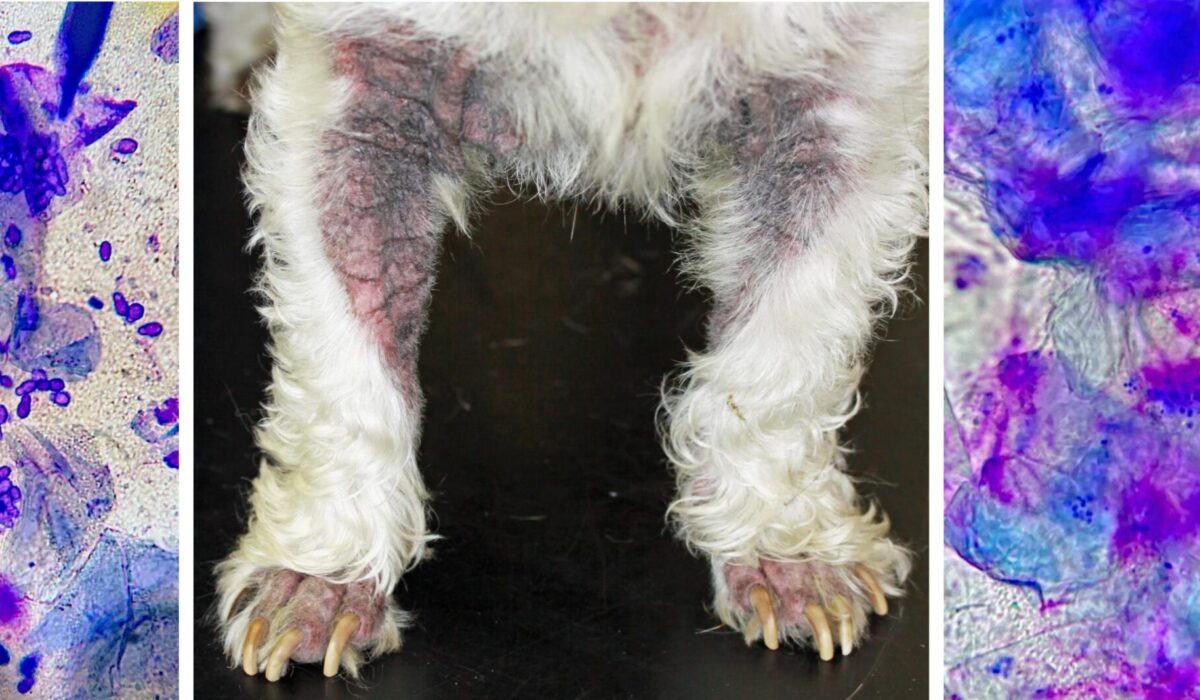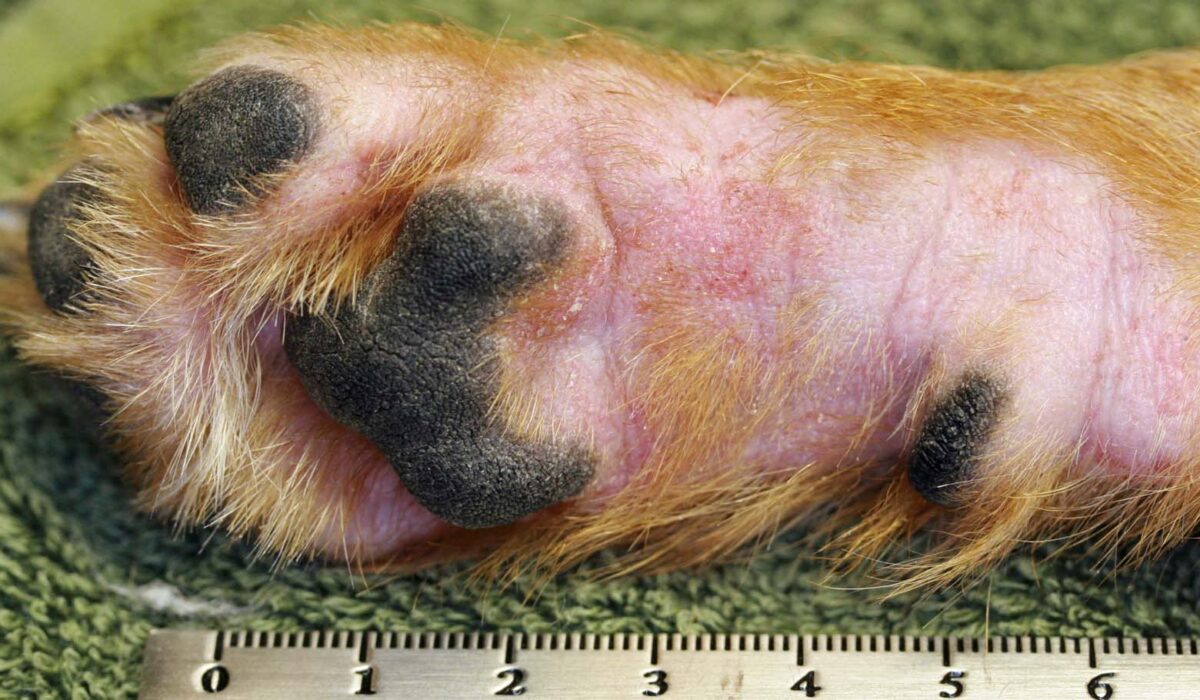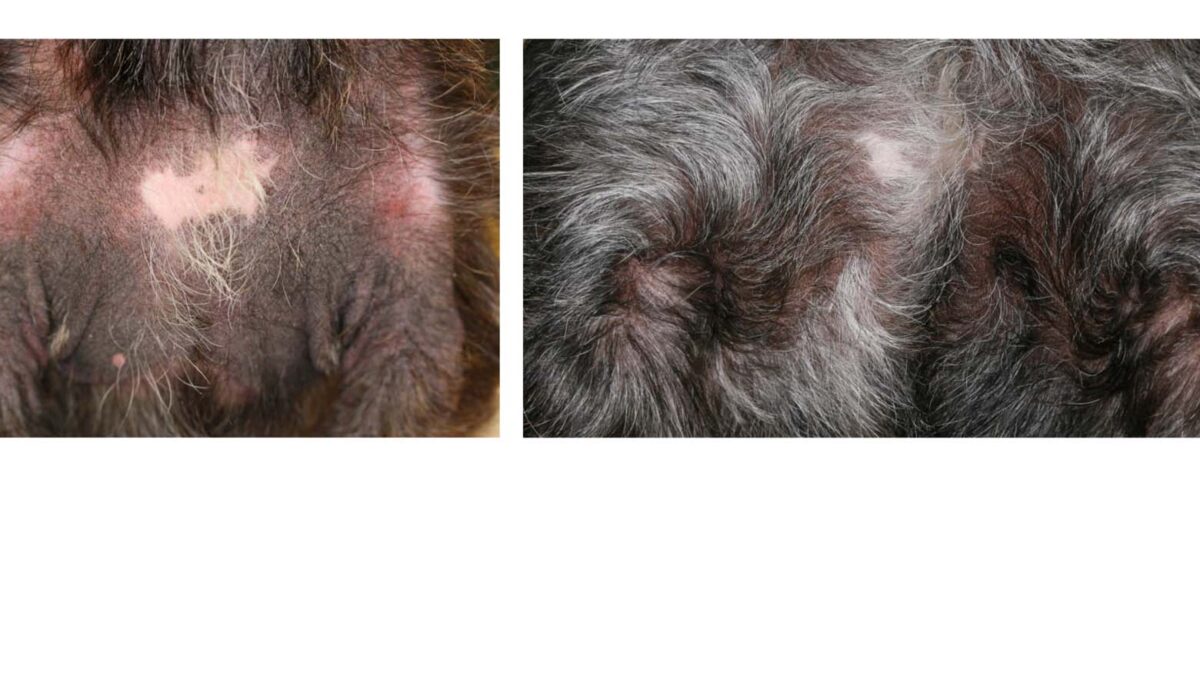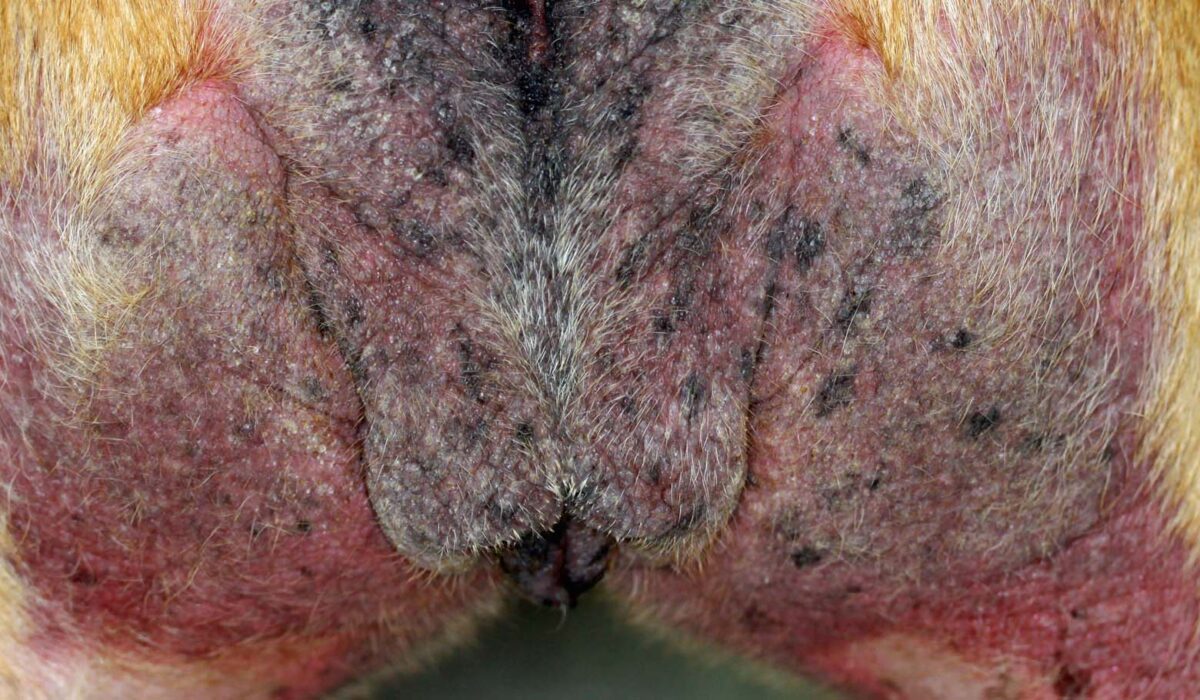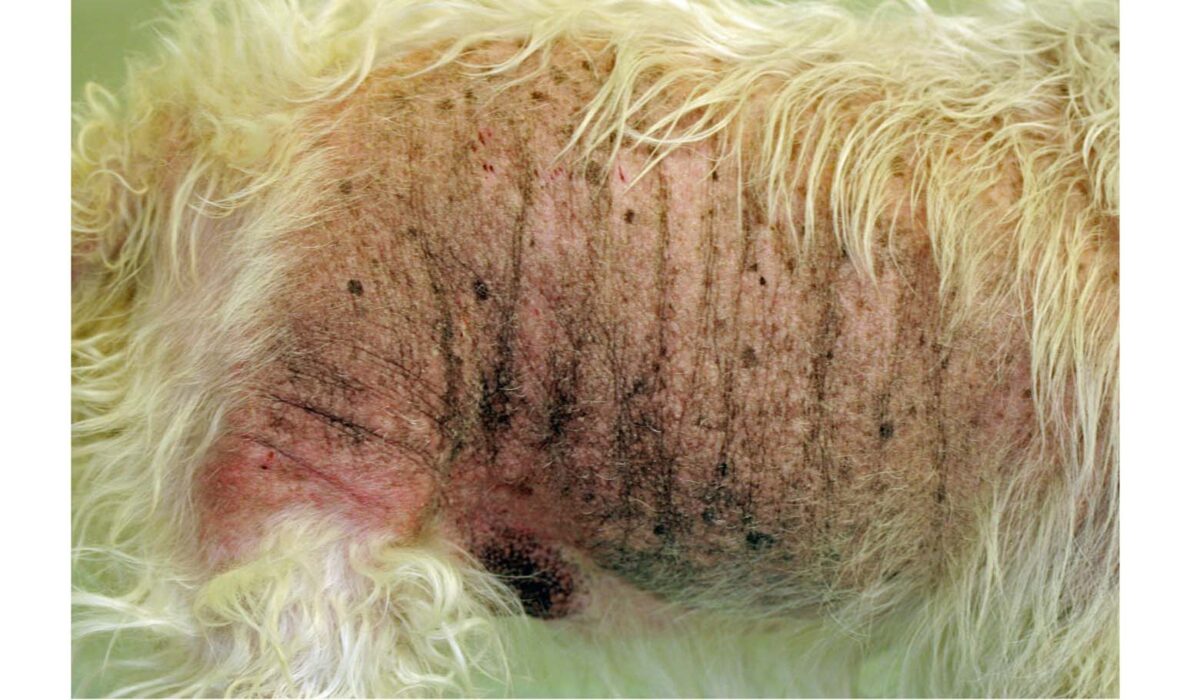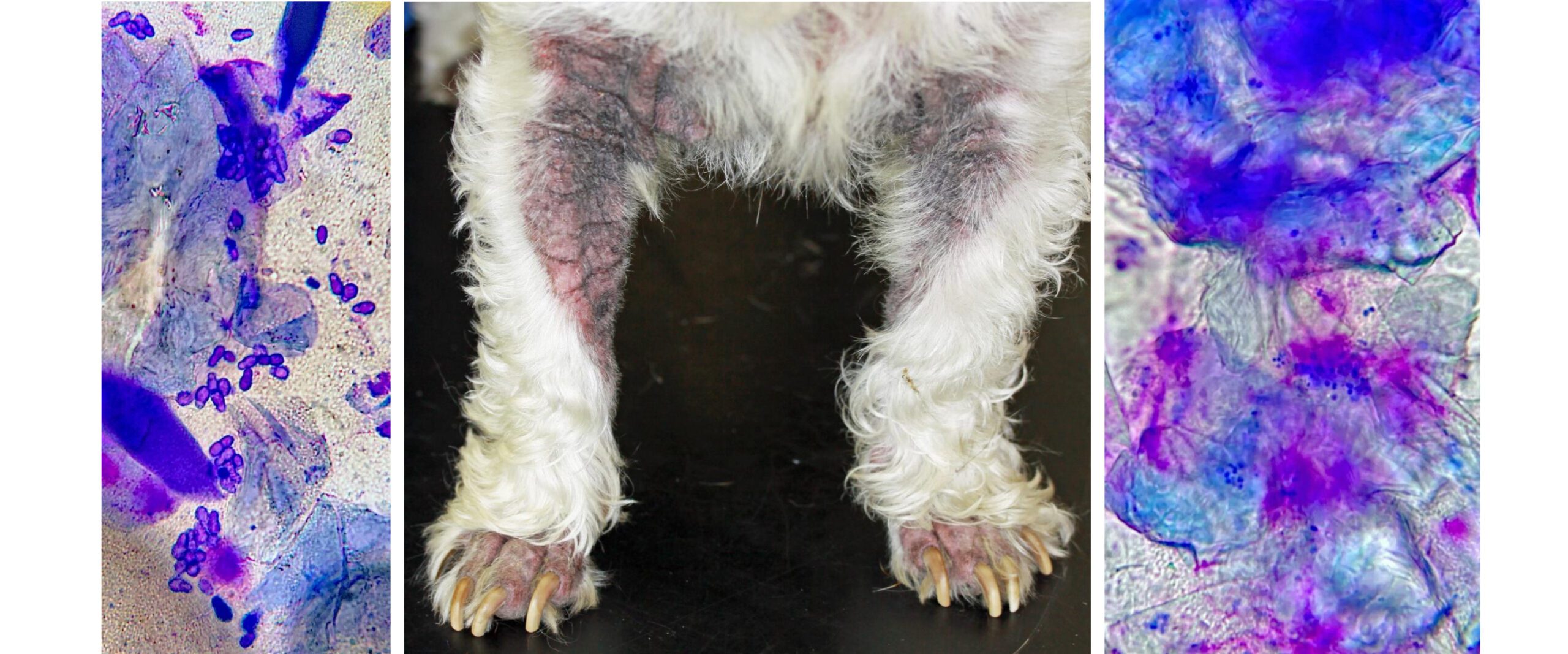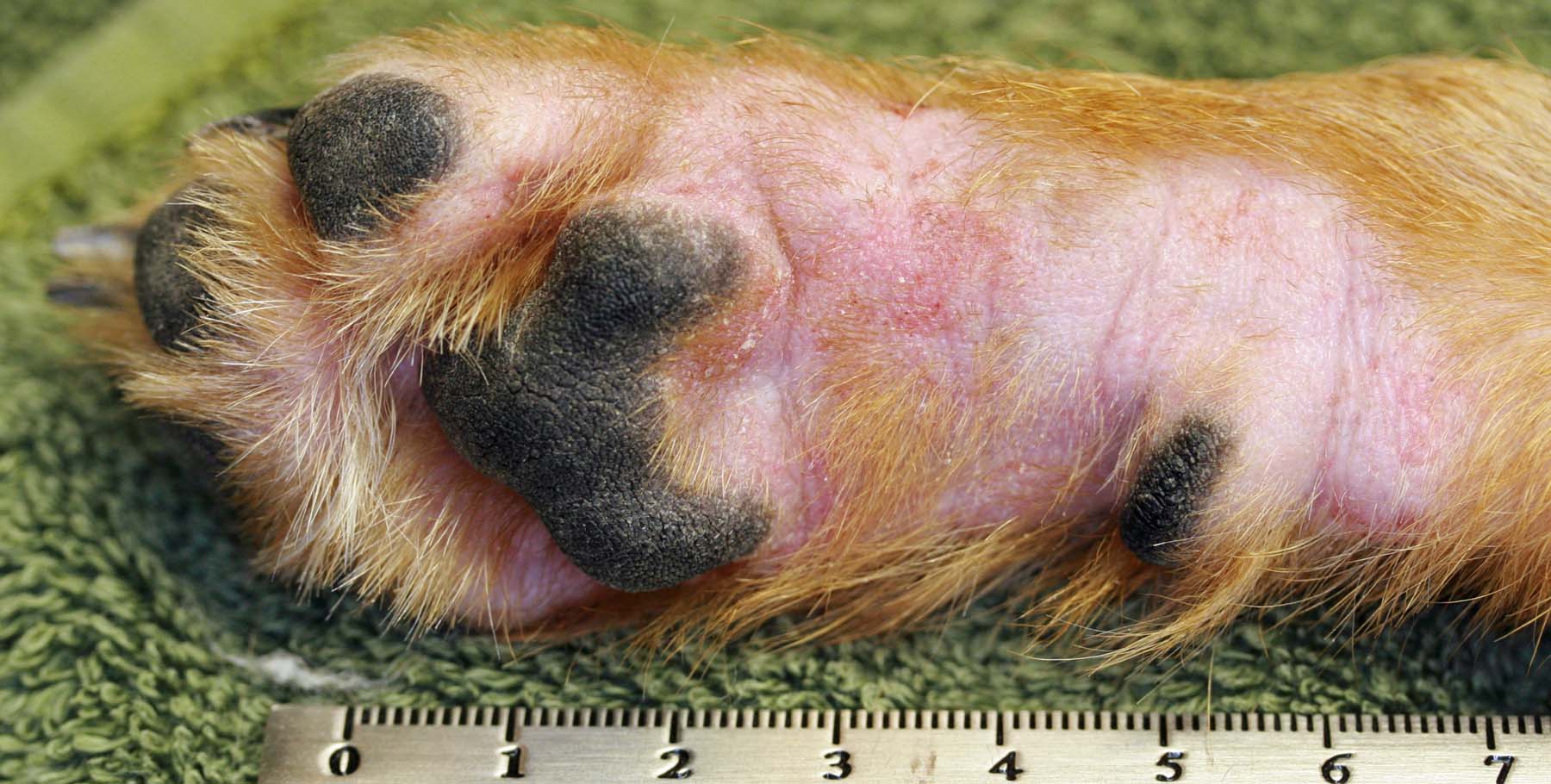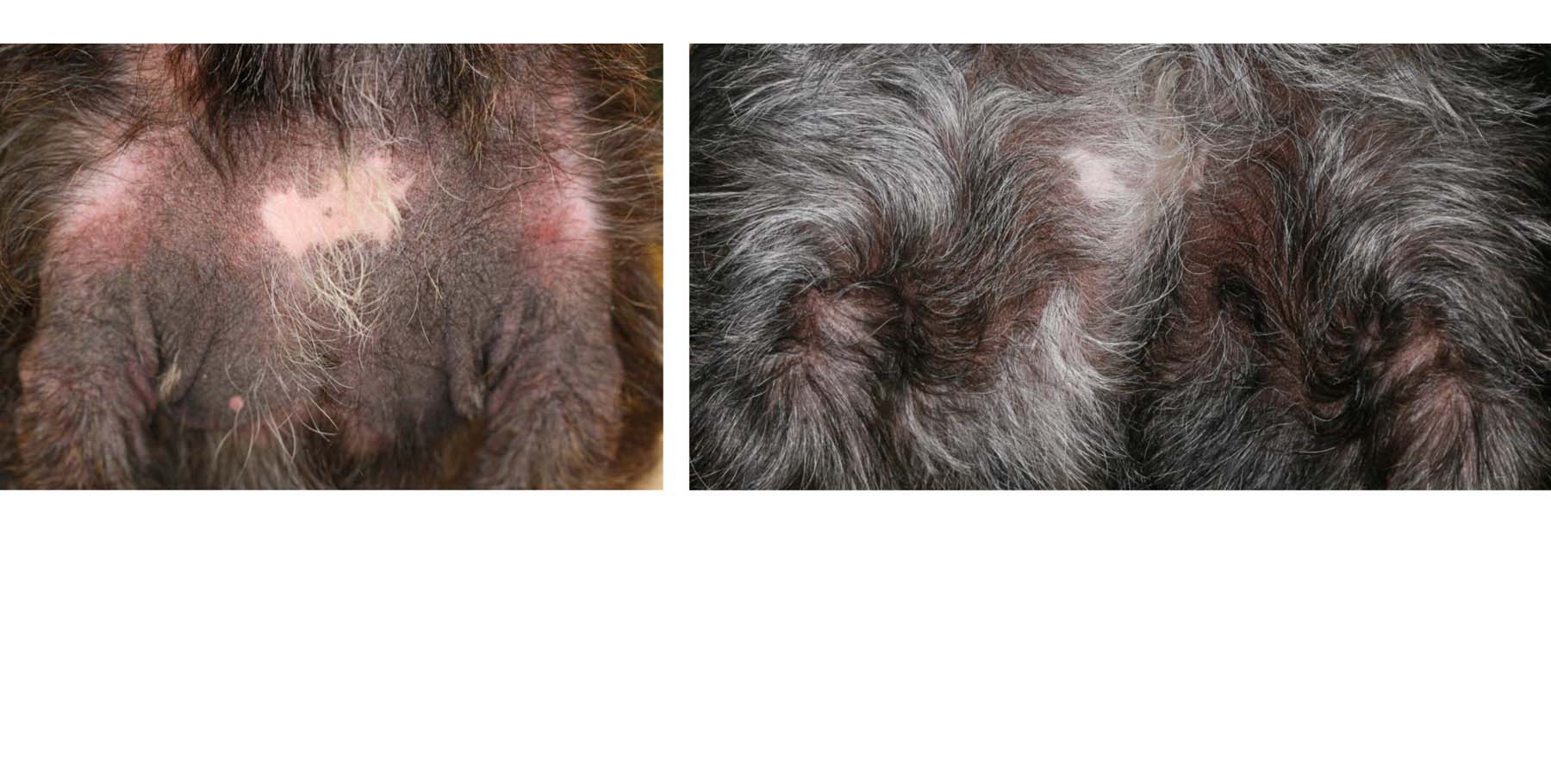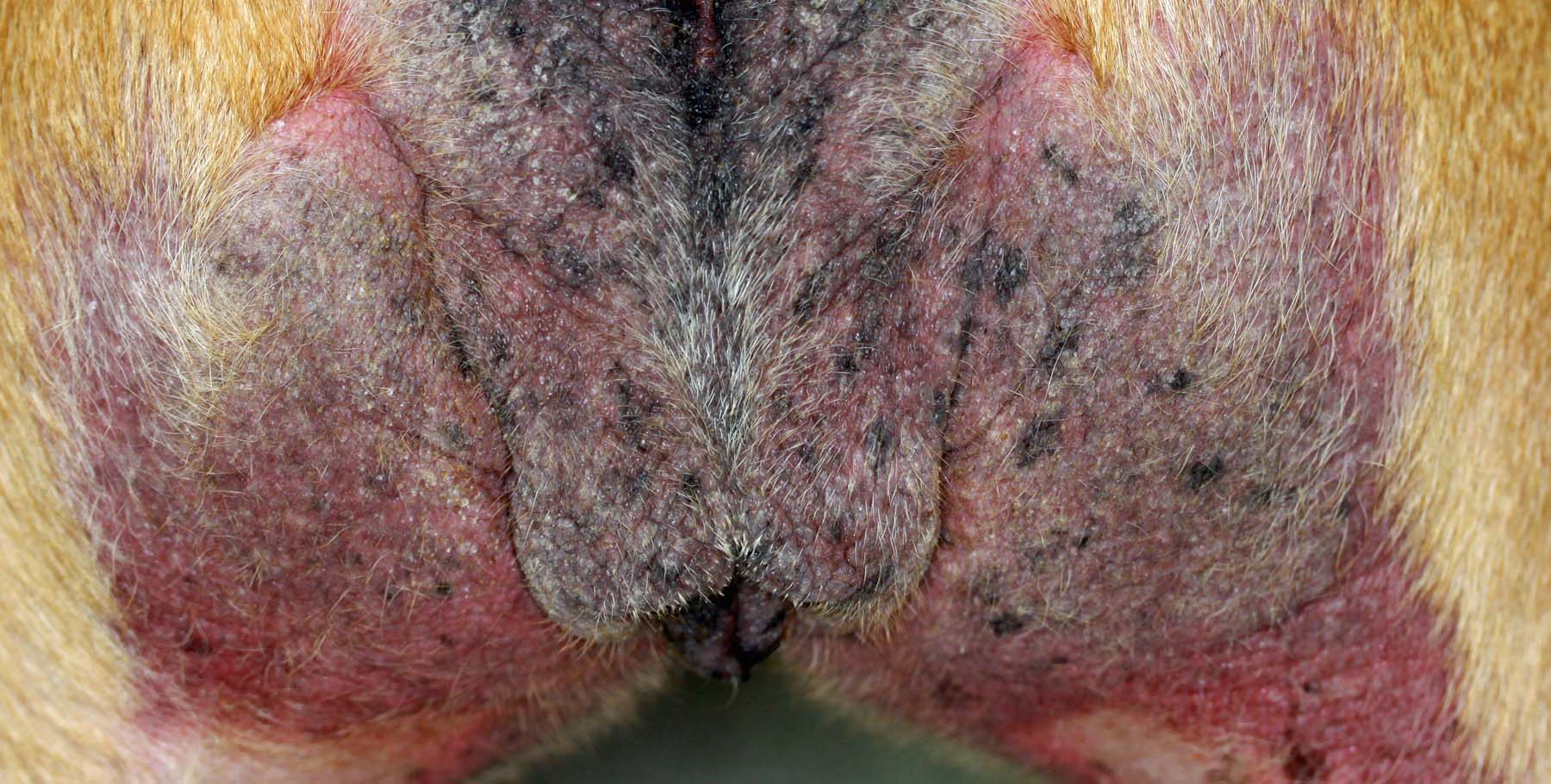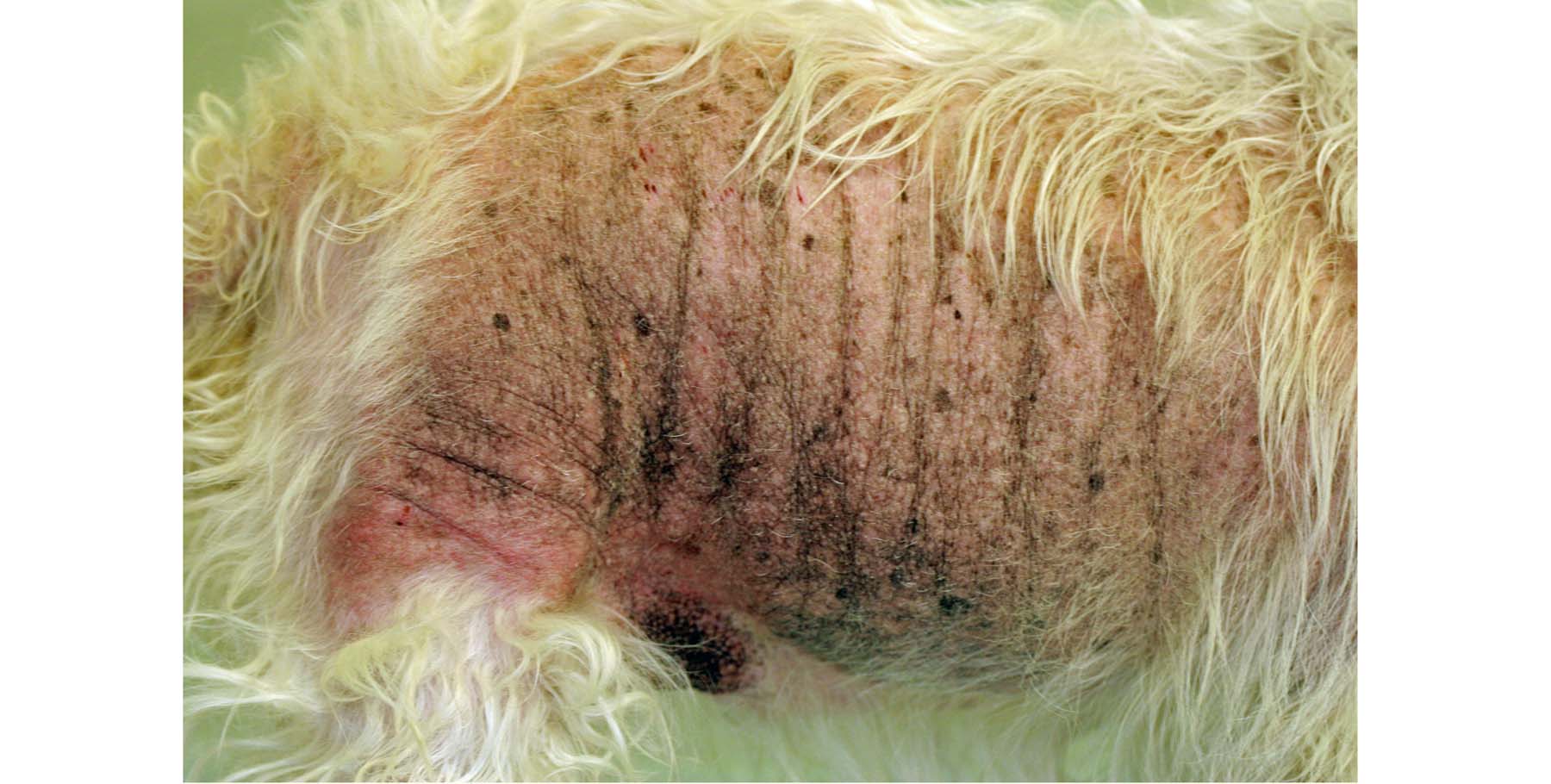Atopic Dermatitis
In Dogs & Cats in the UK, this is, by far, THE most common primary underlying cause of:
- Itching (this includes licking, scratching, biting, chewing, nibbling or rubbing)
- Secondary bacterial skin infections
- Secondary yeast & bacterial ear infections
Canine Atopic Dermatitis (CAD) is a common dermatosis of dogs is classically defined as a genetically-predisposed inflammatory and pruritic (itchy) skin disease with characteristic clinical features that is associated with IgE antibodies, most commonly directed against environmental allergens. But CAD has more recently been described as a clinical syndrome resulting from a combination of genetic and environmental factors.
It is a dynamic & multifactorial condition hence ICADA’s 2023 definition: Canine atopic dermatitis is a hereditary, typically pruritic & predominantly T-cell driven inflammatory skin disease involving interplay between skin barrier abnormalities, allergen sensitization & microbial dysbiosis. This new definition is useful in that it includes our current broader understanding of the pathogenesis of this condition beyond allergy. This new definition highlights the multiple factors involved in this disease, which supports the recommendation that the management of CAD must be multimodal:
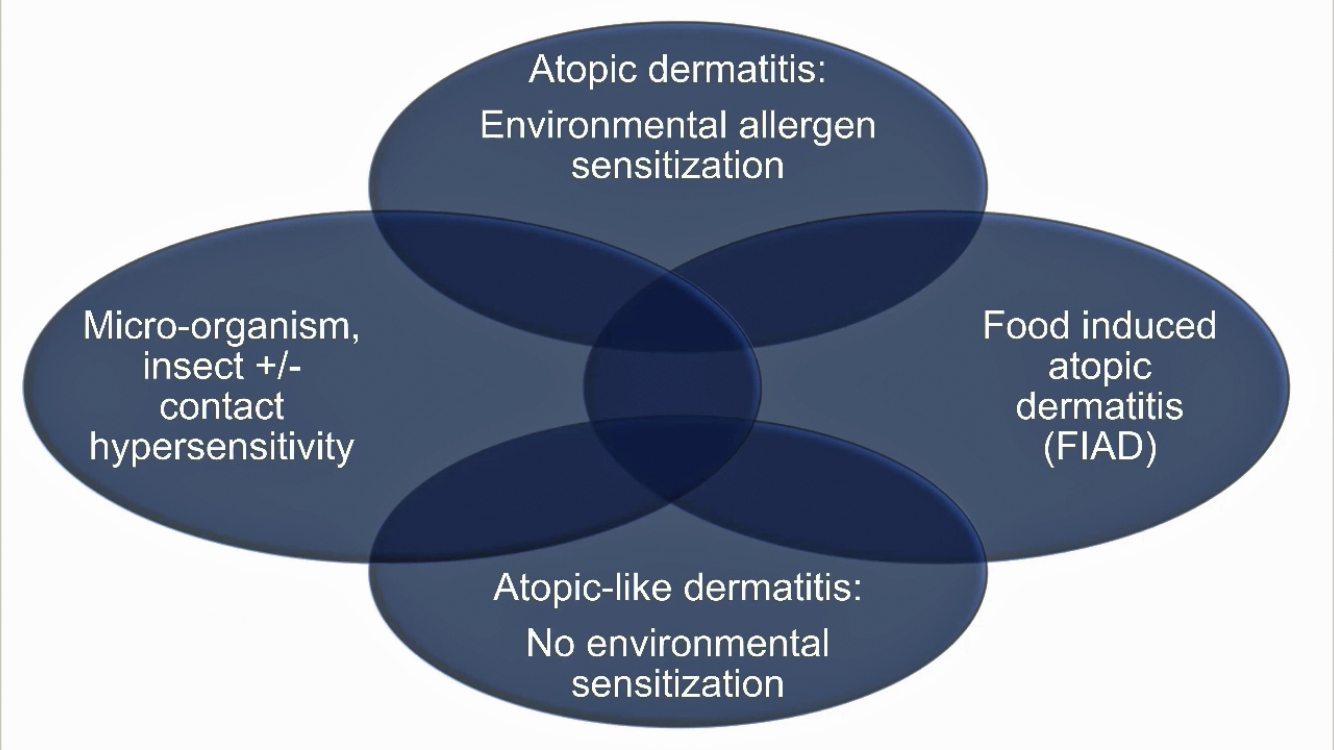

Redefining CAD (T Nuttall, WCVD9)
Although commonly viewed as an allergic skin diseases it can occur in the absence of allergens – as the skin may be intrinsically abnormal. This subset of AD cases are termed as having atopic-like dermatitis (or, as in humans, intrinsic atopic dermatitis)
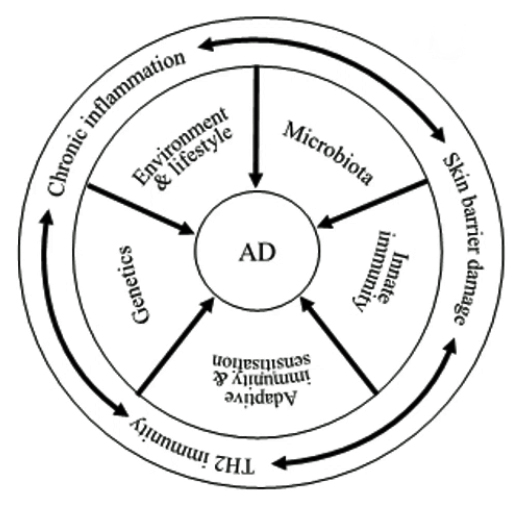

Redefining Canine Atopic Dermatitis (T Nuttall, WCVD, adapted from Eyerich et al, 2015)
Diagnosing CAD
The current criteria for diagnosing Canine Atopic Dermatitis has been revised by Thierry Olivry & the International Task Force on Canine Atopic Dermatitis for 2010:
Favrot’s 2009 Criteria for Canine Atopic Dermatitis:
- Onset of signs less than 3 years
- Dog living mostly indoors
- Glucocorticoid-responsive pruritus
- Pruritus sine materia at onset (alesional pruritus, ‘itch before rash’)
- Affected front paws
- Affected pinnae
- Non-affected ear margins
- Non-affected dorsolumbar area
- (Chronic or recurrent yeast infections)
Nb. Serological aeroallergen testing should not be used to diagnose CAD.
There is building evidence on skin barrier abnormalities in CAD. Some abnormalities may be intrinsic to atopic keratinocytes but many changes may be secondary. There in inconclusive evidence regarding primary genetic mutations in dogs. Increase skin pH has been shown to play an important role in increasing enzymatic activity in atopic skin and worsening the skin barrier.
All of my individualised treatment regimes will have therapy targetted specifically towards this aspect of CAD.
A survey of referred clients with atopic dogs, was presented at ESVD Congress in Lausanne, in September 2017 by Bensignor and Merven.
It documented the main owner complaints which were, in decreasing order of prevalence:
- Absence of a cure
- The cost of medications
- The emotional aspect of the disease
- The lack of awareness by the vets and nurses
- The absence of a clear treatment decision and/or plan
- The ineffectiveness of medications
- The lack of explanation about atopic dermatitis
- Inadequate explanations for the treatment and/or use of topical therapies including otic products
I would consider these as very good reasons to refer early and subsequently retain your clients.
CAD is considered one of the top worst dermatological conditions and is easily the commonest of the top five. Studies have proven the significant deleterious effect of dermatological disease, especially CAD, on patient and owner health-related quality of Life (QoL). Linek and Favrot’s study from October 2010, stated that CAD deeply influences the way of life of the owners. Dr Chiara Noli et al., has developed and validated a dermatological QoL questionnaire to aid in the administration and correlation with efficacy of treatment. ICADA stated in August 2015, that: ‘Ultimately, the QoL of both dogs, and their owner…should be considered before a treatment plan is designed’
The Australian Veterinary Dermatology Advisory Panel has produced this comprehensive document Guidelines for the Diagnosis & Management of Pruritic Dermatitis in Dogs. Burrows M., Crothers S, Hill P., Shipstone M., Traub R., Vogelnest L. Click Here To Access
![]()
![]()
The worldwide veterinary dermatology community has collaborated to produce this ground-breaking document:
Treatment of Canine Atopic Dermatitis – 2010 Clinical Practice Guidelines from the International Task Force on Canine Atopic Dermatitis. Olivry T., DeBoer D.J., Jackson H.A., Mueller R.S., Nuttall T. & Prelaud P. for The International Task Force on Canine Atopic Dermatitis
This comprehensive article is available for free download through this Click Here To Access . This review discusses the causes and mechanisms of Atopic dermatitis and reviews the current treatments. Most importantly the Task Force has categorized the evidence for the various treatments which in turn allows it to grade the strength of the recommended treatments.
The Task Force has now become The International Committee for Allergic Diseases in Animals (ICADA). Many more articles and review papers are available, on their website and free-to-access through Elsevier or Wiley. A notable inclusion is Validation of the Canine Atopic Dermatitis Extent and Severity Index (CADESI)-4, a simplified severity scale for assessing skin lesions of atopic dermatitis in dogs. Olivry T, Saridomichelakis M, Nuttall T, et al. Veterinary Dermatology 2014.
The latest set of ICADA reviews has been published in a single edition of the Veterinary Dermatology Journal (Wiley) in April 2015 – reviewing the last four years of publications on the clinical & histological manifestations; pathogenesis (skin barrier, host-micro-organism interactions, role of genetics and the environment); innate immunity, lipid metabolism, nutrition; role of antibodies, auto-allergens & food allergens, lymphocytes, cytokines, chemokines, T-helper 1 -T-helper 2 balance of canine atopic dermatitis
Two new guidelines were published by the ICADA in August 2015. These papers are available open access in the journal BMC Veterinary Research at the following locations:
Canine Atopic dermatitis: detailed guidelines for diagnosis & allergen identification (Hensel et al.): Click Here To Access
Canine Atopic dermatitis: 2015 update guidelines on treatment (Olivry et al.): Click Here To Access
Three pathogenesis review articles plus an update definition were published by the ICADA in February 2024. These papers are available open access in the journal Veterinary Dermatology (Wiley Online Library) at the following locations:
Update on the skin barrier, cutaneous microbiome and host defence peptides in canine atopic dermatitis (Santoro et al.) Click Here To Access
Update on the role of genetic factors, environmental factors and allergens in Canine Atopic Dermatitis (Hensel et al.) Click Here To Access
Update on the role of cytokines and chemokines in Canine Atopic Dermatitis (Tamamoto-Mochizuki et al.) Click Here To Access

